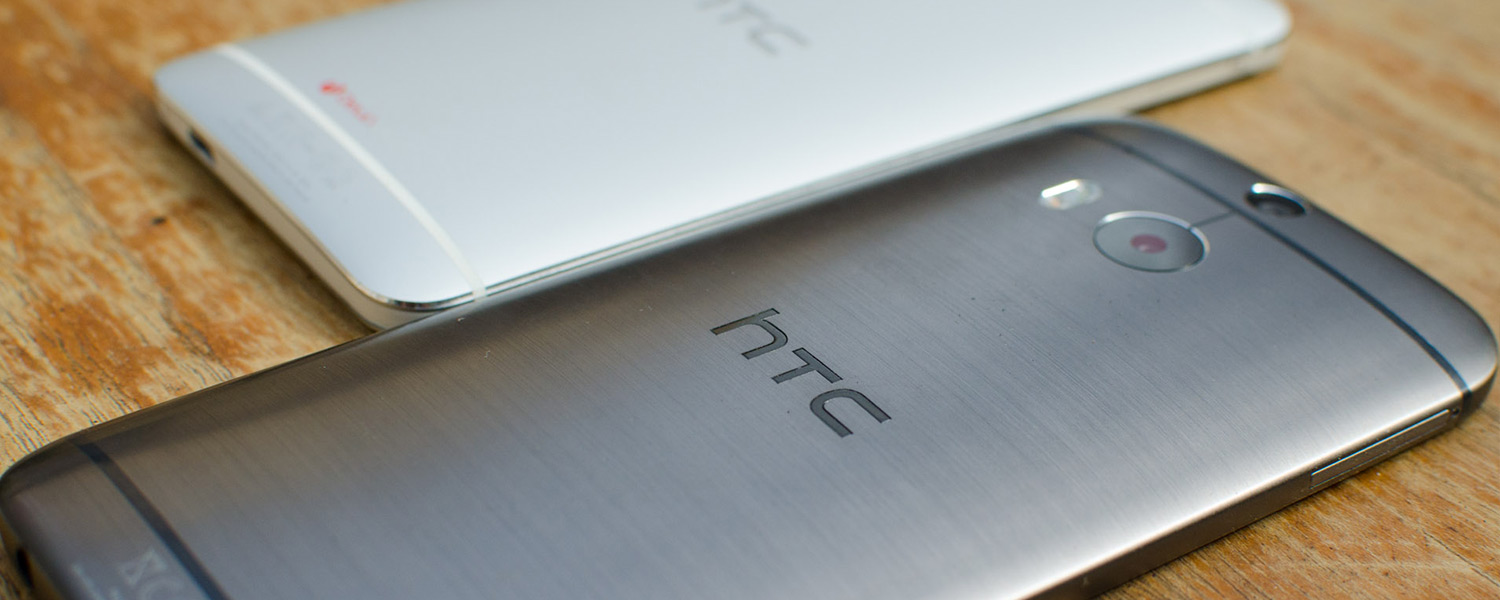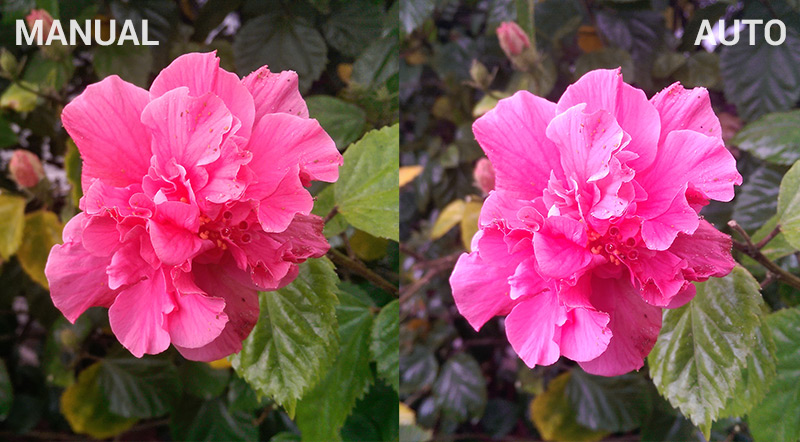Camera Quality: The Ultrapixel Factor
The main camera sensor on the HTC One M8 is the same ‘Ultrapixel’-branded OmniVision OV4688 unit that was seen on the M7. This particular sensor is 1/3” in size, and packs 4.1 megapixels (2688 × 1520) at a 16:9 aspect ratio with a pixel size of 2.0 µm. It’s paired with an f/2.0 lens with an effective 28mm focal length, and a two-tone dual-LED flash.
Diving through the One M8’s firmware reveals the front-facing camera is Samsung’s S5K5E2 1/5” CMOS sensor. Unlike both rear sensors, the front camera has a native aspect ratio of 4:3, with a resolution of 4.9 megapixels (2560 x 1920) and 1.12 µm pixels. It’s also paired with an f/2.0 lens, but it has a slightly wider equivalent focal length of 24mm.
Click on any photo to enlarge
I’ll get the major complaint about the HTC One M8’s camera out of the way before anything else: it only takes four megapixel images. HTC’s reasoning for this is that most people take photos on their smartphone and downsize them below four megapixels during the upload process to social media. So instead of packing a high megapixel count into the M8 (and M7), they went for a large pixel size to improve low-light photography.
In some respects HTC’s points are valid – the large pixel size really does improve low-light performance – but in other respects they have failed to account for some critical facts. One such fact is that small smartphone sensors are almost always lacklustre at full resolution, meaning you need to downscale to achieve an acceptable level of quality. The higher the megapixel count, the better results you generally get from downscaling to social media size (1080p or less).
Another fact is that some people like to crop images and zoom in on certain areas. This is quite possible with 20-megapixel, 13-megapixel and even eight-megapixel sensors without a huge reduction in quality, but isn’t the case with HTC’s four-megapixel unit. Cropping photos taken on the One M8 will almost immediately highlight the low resolution of images as the lack of intricate detail comes to the surface.
It’s also crazy to think that an image from the One M8 won’t fill the entire display on some current laptops, such as the MacBook Pro with Retina display or the Lenovo Yoga 2 Pro. It also can’t capture 4K video not because of bandwidth constraints, but because the sensor actually isn’t large enough to capture a 3840 x 2160 (8.3 megapixel) frame.
In an ideal world, HTC would have responded to feedback from the One M7 and swapped out the sensor for something that’s more of a compromise. Maybe a 1/3” model with 1.5 µm pixels for a resolution of eight megapixels; or even a 1/2.3” sensor as seen on the Sony Xperia Z1, but with 2.0 µm or 1.5 µm pixels to deliver seven or 12 megapixels respectively.
When shooting in ideal conditions, the HTC One M8’s camera is quite capable. Unlike with the M7, the camera captures exactly what you see in the preview, and with essentially no shutter lag. Despite having the same sensor as the M7, the M8 has improved color accuracy and vibrance across the board, which results in photos that look less dull and washed out.
Shots from medium range to macro are the most impressive in strong lighting, thanks to a great level of sharpness at full resolution, accurate color reproduction, few artefacts and reasonable bokeh from the f/2.0 lens. White balance and exposure are sometimes questionable, but not to a disappointing level.
Click here to check out full sized samples from the HTC One (M8)
When taking wide-angle shots, the OmniVision sensor doesn’t have particularly great dynamic range, so highlights can be blown out and it can be hard to see the detail in darker or shadowed areas. Like past HTC cameras, it also struggles with perfect exposure in cloudy environments, which combined with the mediocre dynamic range can make photos look dull in these conditions.
Shooting in the HDR mode is effective and can significantly improve photos where dynamic range is an issue. There are limitations to HDR, such as the processing time, stability issues from the fact it takes two photos, and the lack of depth information capture, but it’s certainly a viable solution in some scenarios. Unfortunately, HTC’s camera app won’t automatically take HDR photos for you; you’ll need to manually select the mode.
Aside from some circumstances in strong lighting, the HTC One M8 really excels in moderate and low light conditions, thanks to the sensor’s large pixel size. Typically, photos you’ll get will be bright, balanced and well saturated, and only occasionally did I experience inaccurate white balance. Image quality seems to be particularly excellent when there’s artificial lighting, something that other smartphone cameras can struggle with.
The removal of optical image stabilization (OIS) from the HTC One M8’s camera module is an interesting choice, and it’s possibly due to the added cost and size. The sensor itself is actually more than capable of producing the goods at night: shooting at ISO 3200 and a shutter speed of 1/10s produces bright, decent images. But having OIS will always produce better images, as the camera can use longer shutter speeds (down to 1/3s on the HTC One M7) and lower ISOs.
Having OIS on the M8 would have validated the continuing effort to produce great results in low light. The large sensor size assists greatly when indoors and in low light, but the final piece of the puzzle feels missing in the One M8, especially as it was a feature of the M7.
The two-tone LED next to the camera – branded as “Smart Flash 2.0” by HTC – does improve the color tone of images taken with the flash, as the intensity of either the cooler or warmer LEDs can be adjusted to give the most accurate image. However, the sensor itself is excellent in low-light conditions, so it’s unlikely the flash will get much use.
So I’ve established there are a few inherent issues with the HTC One’s camera – the removal of OIS and mediocre dynamic range – but problems with metering is the one issue I find most annoying. Some of the photos above are substandard not because the sensor itself is incapable, but because the camera software and firmware isn’t properly adjusting settings for the conditions, especially as the camera appears to spot-meter rather than use a usually superior matrix-metering model.
Chuck the camera into manual mode, and you can achieve much better results than you can in automatic mode. For example when I was taking a photo of the flower seen above, the automatic mode chose ISO 125 and a shutter speed of 1/125s. The image was sharp, but not fantastically so, and conditions were quite cloudy, so I put the M8 in manual mode with an ISO of 200, shutter speed of 1/320s and adjusted the white balance so the image was warmer. The end result from these adjustments was far better.
HTC needs to tweak their camera software slightly to make images look as good as what’s possible in manual mode. The flower image is one example of many where I took a better photo in manual mode, but it’s a fiddly process and the automatic mode should ideally be just as good.
On the One M8 you’ll find a five megapixel front-facing camera, and it’s certainly unusual to see the device with a rear camera smaller in resolution than the front camera. In actual fact, the two sensors have almost equal resolution widths (2688 on the front vs 2560 on the back), but the five-megapixel front camera has a much higher resolution height as it’s 4:3 as opposed to 16:9.
Thanks to the five-megapixel front-facing camera the HTC One M8 is perfect for selfies, as it’s one of the best front-facing units I’ve seen. With that said, the overall quality is not as good as the rear camera in color saturation and sharpness, even though the resolution is higher. It’s definitely the best camera for photographing yourself, but it’d be stupid to use it for all shots just because it’s five megapixels.
As for video recording quality, there are four main recording modes, listed in the table below.
| Video Mode | Standard | Fast Motion | HDR | Slow Motion |
| Max. Resolution | 1920 x 1080 | 1920 x 1080 | 1920 x 1080 | 1280 x 720 |
| Recording FPS | 30 | 60 | 60 | 96 |
| Playback FPS | 30 | 60 | 30 | 24 |
| Bitrate | 20 Mbps | 20 Mbps | 20 Mbps | 12 Mbps |
| Codec | H.264 (High) | H.264 (High) | H.264 (High) | H.264 (Baseline) |
| Audio | 2ch 192 kbps AAC | 2ch 192 kbps AAC | 2ch 192 kbps AAC | None |
Recording at 1080p30 with a bitrate of 20 Mbps is fairly standard for a smartphone, but it’s interesting to see the inclusion of 1080p60 “Fast Motion” at just 20 Mbps. This means each frame when recording at 60 FPS gets half the amount of bits to use compared to 30 FPS, which isn’t ideal. The LG G2, one of the few other smartphones that packs 1080p60, records at 30 Mbps: still a reduction in the quality of each frame, but more respectable.
The quality from the HTC One M8’s rear camera while video recording is great, mirroring the quality seen from still images. The lack of OIS hurts when panning and moving about, but the software stabilizer compensates somewhat. Audio quality is also good, making it easy to hear voices.
Despite recording 60 frames per second video at the same bitrate as 30 FPS in Fast Motion mode, the quality is still good, as you can see by downloading a sample here. If you need to record fast moving subjects, this is the best mode to use, and won’t consume any more storage space than 1080p30. However in most other scenarios I’d stick to 30 FPS for the extra quality per frame.
HDR video is nothing like the still HDR mode, producing very strange results that make the video mode not worth using. Exposure switches between too dark and too light very quickly before settling on an ideal exposure, and there’s visible artefacts in shadowed areas. HDR video is an interesting concept, but I haven’t seen a perfect execution yet.
I love playing around with slow motion video, so it’s great to see the feature part of the One M8’s camera capabilities. It records at a resolution of 720p at 96 frames per second with decent quality, and plays back at 24 frames per second. I would have liked to see 720p120 video, so playback at 24p would be five times slower than natural, but it’s still a fun mode to use.























